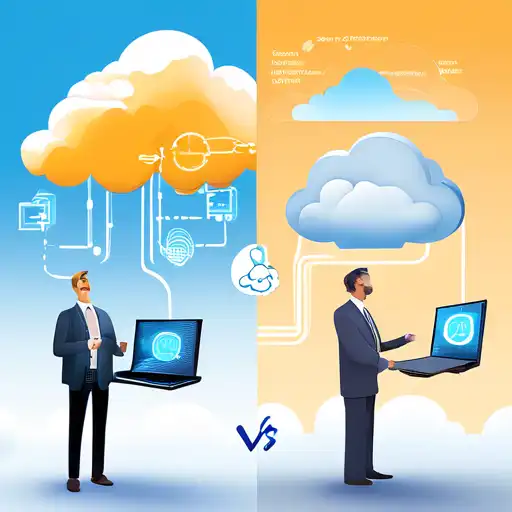Introduction to Edge and Cloud Computing
In the rapidly evolving world of technology, two terms have become increasingly prominent: Edge Computing and Cloud Computing. Both play pivotal roles in how data is processed, stored, and managed across the globe. However, they serve distinct purposes and offer unique advantages. This article delves into the key differences between edge computing and cloud computing, helping you understand which might be the best fit for your needs.
What is Cloud Computing?
Cloud computing is a technology that allows users to store and access data and programs over the internet instead of on a physical computer or server. It's known for its scalability, flexibility, and cost-effectiveness. Major players like Amazon Web Services, Microsoft Azure, and Google Cloud dominate this space, offering a range of services from infrastructure as a service (IaaS) to software as a service (SaaS).
What is Edge Computing?
Edge computing, on the other hand, refers to the processing of data near the source of data generation, rather than relying on a central data center. This approach reduces latency, saves bandwidth, and enhances privacy and security. It's particularly useful in scenarios requiring real-time processing, such as autonomous vehicles and smart cities.
Key Differences Between Edge and Cloud Computing
While both technologies deal with data processing, their approaches and applications differ significantly. Below are some of the key differences:
- Latency: Edge computing significantly reduces latency by processing data closer to the source, whereas cloud computing may introduce delays due to data traveling to and from centralized servers.
- Bandwidth Usage: Edge computing minimizes bandwidth usage by processing data locally, making it ideal for IoT devices. Cloud computing, while efficient, can consume more bandwidth as data is sent to and processed in the cloud.
- Security: Edge computing can offer enhanced security by keeping sensitive data local, reducing exposure to potential breaches during transmission. Cloud computing providers invest heavily in security, but the centralized nature of data storage can present a target for attacks.
- Scalability: Cloud computing excels in scalability, allowing businesses to easily increase or decrease their computing resources as needed. Edge computing is more limited in this regard, as it relies on local hardware.
Choosing Between Edge and Cloud Computing
The choice between edge and cloud computing depends on your specific needs. If your operations require real-time processing and reduced latency, edge computing may be the way to go. However, if you're looking for scalability and flexibility, cloud computing might be more suitable. Many organizations find that a hybrid approach, leveraging the strengths of both technologies, offers the best of both worlds.
Conclusion
Edge computing and cloud computing are not mutually exclusive but rather complementary technologies that serve different purposes. Understanding their key differences is crucial for making informed decisions about which technology or combination of technologies will best meet your needs. As the digital landscape continues to evolve, the integration of edge and cloud computing will play a pivotal role in shaping the future of data processing and management.
